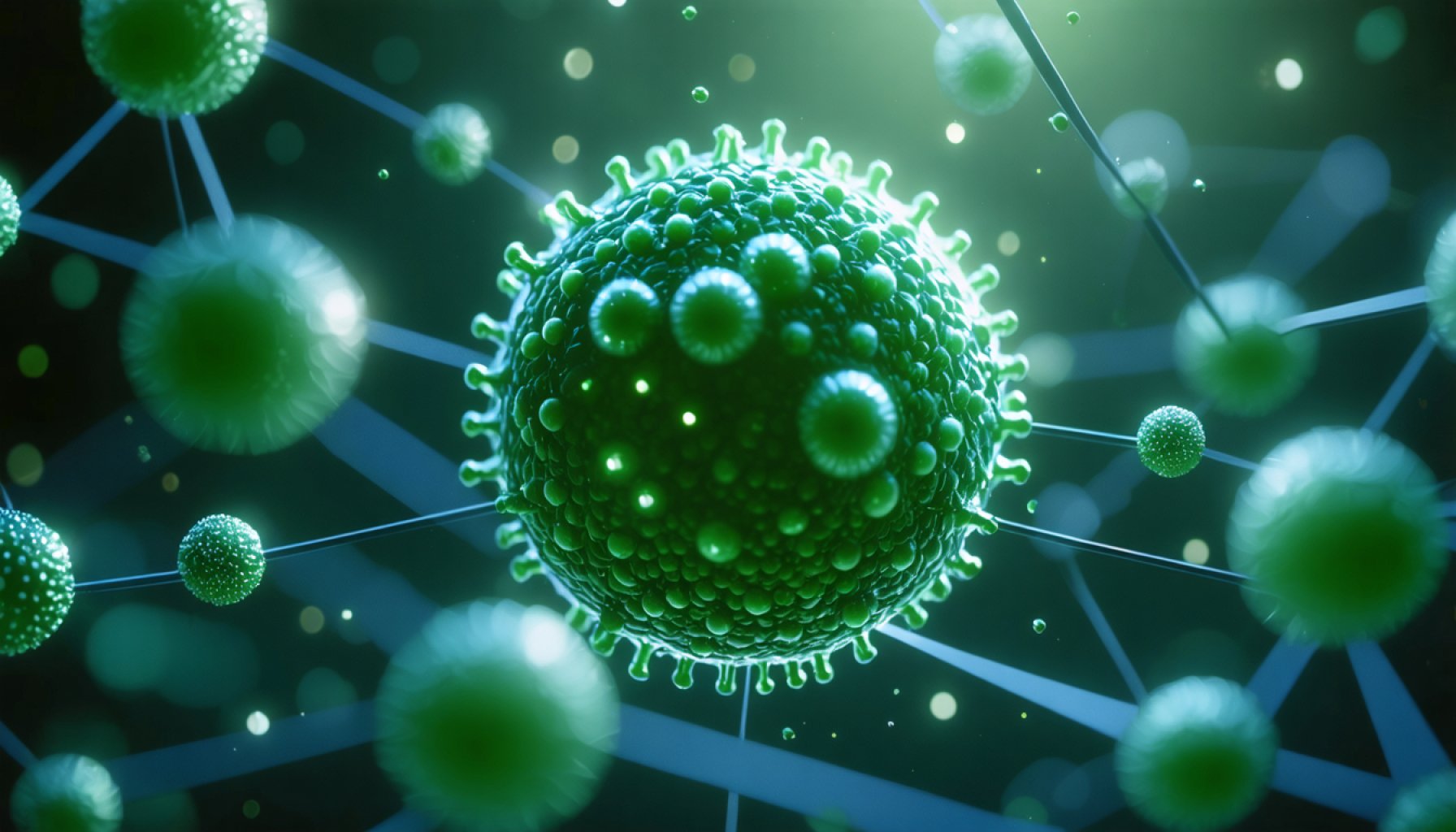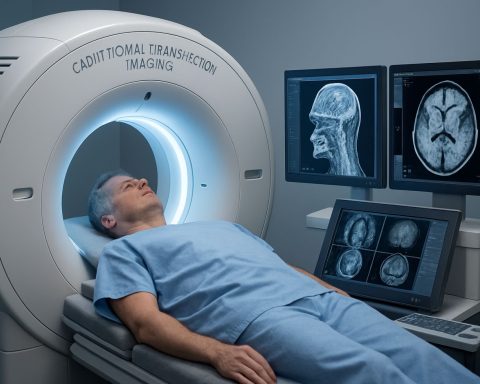- The University of Alberta presents significant advancements in cancer therapy through a new nanoparticle formulation of the PNKP compound.
- Onco-Innovations’ study shows that when this compound is combined with radiation therapy, it effectively targets cancer cells while minimizing damage to healthy tissues.
- The preclinical study notes low toxicity, with treated mice showing no significant side effects, suggesting potential for reduced side effects in human treatments.
- The compound aligns with regulatory requirements, like those from Health Canada, due to its minimal toxicity profile.
- While results are promising, human trials are still pending, requiring more research and validation for clinical application.
- This research represents a potential shift toward more effective and compassionate cancer treatments, blending high efficacy with reduced collateral damage.
A groundbreaking study emerges from the University of Alberta, showcasing a potential leap forward in cancer therapy’s safety and effectiveness. Onco-Innovations, a trailblazer in oncological research, unveils promising preclinical results of their second-generation nanoparticle formulation of the Polynucleotide Kinase 3′-Phosphatase (PNKP) compound. This futuristic compound, when married with radiation therapy, heralds a new narrative in the battle against cancer.
The drama of discovery unfolds over 24 days, with the University’s meticulous scientists observing three groups of mice burdened with colorectal cancer. Each cohort receives varied treatment regimes, a symphony of science seeking harmony in cellular healing. Among the cacophony of data, a key finding stands out with crystalline clarity: the PNKP technology, designed to target cancer cells with surgical precision, maintains a surprisingly low toxicity profile even at therapeutic doses.
It’s akin to an artist wielding a delicate brush, applying treatments that impact the intended cancer cells while sparing the healthy tissue canvas from significant harm. Observers note the serenity in the data: no significant toxicity signs, not even weight loss, mar the health of the treated groups, underscoring the compound’s potential for fewer side effects.
The implications stretch beyond the confines of laboratory cages and into the corridors of human treatment prospects. In any such narrative, regulatory bodies loom large, and this tale is no different. The technology’s prerequisite of minimal toxicity aligns seamlessly with Health Canada’s rigorous criteria, offering hope that future human trials could one day confirm these findings in earnest.
Yet, every scientific frontier comes with its shadows. The results rest solidly in the realm of animal studies, with human trials still a distant shore, beckoning though they are. The journey from preclinical promise to clinical reality demands extensive testing, patience, and unwavering resolve.
A takeaway? The study signals a pivotal step towards more humane therapies, hinting at a future where cancer treatments might one day blend efficacy with empathy—an era where the bruising battle against cancer is fought with both strength and restraint. As the world watches, hope burgeons for advancements that redefine the very foundations of cancer treatment.
Revolution in Cancer Treatment: Breakthrough PNKP Nanoparticles Promise Safer Therapies
Breaking Down the Breakthrough
The recent study from the University of Alberta has ignited excitement within the medical community, showcasing Onco-Innovations’ novel second-generation nanoparticle formulation of Polynucleotide Kinase 3′-Phosphatase (PNKP) when combined with radiation therapy. The promising results displayed the compound’s ability to specifically target cancer cells while minimizing damage to healthy tissues—a significant stride in cancer treatment, particularly for colorectal cancer.
Unexplored Facts and Insights
1. How PNKP Works:
PNKP plays a pivotal role in DNA repair mechanisms. By inhibiting PNKP, the compound prevents cancer cells from repairing DNA damage caused by radiation therapy, effectively leading to tumor cell death. This mechanism ensures that while cancer cells are eradicated, normal cells remain relatively unharmed.
2. Preclinical Findings:
The 24-day study conducted on mice with colorectal cancer revealed no significant toxicity, weight loss, or adverse effects in subjects receiving the PNKP formulation alongside radiation therapy. Such findings are instrumental in upholding patient quality of life, a key concern in cancer treatments.
3. Comparison with Existing Therapies:
Current cancer therapies often involve chemotherapy, which results in severe side effects due to its non-specific nature. The precision of the PNKP nanoparticles represents a shift towards treatments with minimal adverse effects, potentially improving patient adherence and outcomes.
Addressing Pressing Questions
What are the potential benefits of this therapy?
By honing in on cancer cells while sparing healthy tissues, this therapy could significantly reduce the adverse side effects typically associated with cancer treatment, such as nausea, fatigue, and hair loss.
When will human trials begin?
While this breakthrough holds promise, transitioning from preclinical to clinical stages requires rigorous testing and regulatory approval. Human trials could begin within the next few years, depending on further validation and funding.
Implications and Industry Trends
The field of oncology is rapidly evolving with a focus on personalized medicine and targeted therapies. Advances like PNKP nanoparticles exemplify this trend. According to a report by Market Research Future, the oncology segment is poised for significant growth driven by innovations in targeted therapies and immuno-oncology.
Controversies and Challenges
Despite its promise, PNKP therapy must overcome several hurdles:
– Regulatory Approval: Navigating Health Canada and FDA regulations can be time-intensive.
– Cost of Treatment: The development and manufacturing costs need to be optimized to ensure accessibility.
– Long-Term Effects: The long-term implications and potential resistance mechanisms of PNKP therapy are yet to be understood.
Recommendations and Quick Tips
1. Stay Updated: Patients and healthcare providers should follow ongoing research updates from reliable oncology journals.
2. Explore Current Options: While awaiting this therapy’s availability, discuss existing treatment options and clinical trials with oncologists.
3. Prioritize Holistic Health: Emphasize lifestyle changes that support cancer treatment, such as diet, exercise, and stress management.
Explore Related Domains
For more insights into cutting-edge cancer treatments, visit American Cancer Society and National Cancer Institute.
As the tides of medical innovation surge forward, the promise of safer, more effective cancer therapies is within sight. The PNKP nanoparticle study is an encouraging beacon of hope, promising a future where cancer treatments are experienced with grace and minimal suffering. Stay informed, remain hopeful, and advocate for continued research funding to bring such advancements to fruition.











